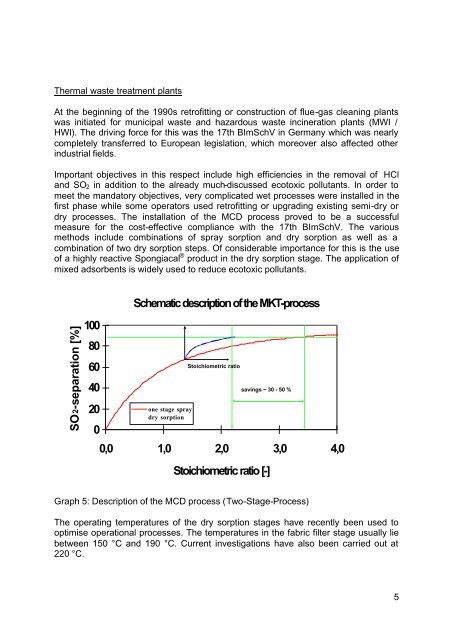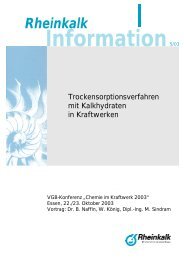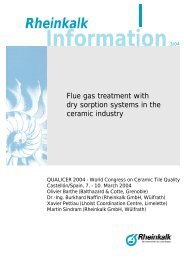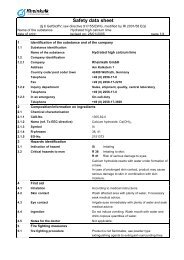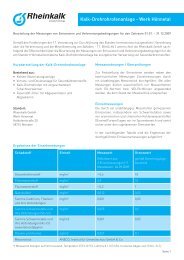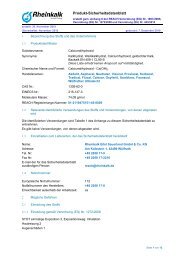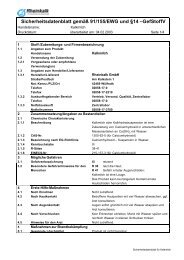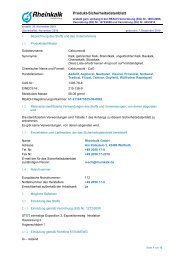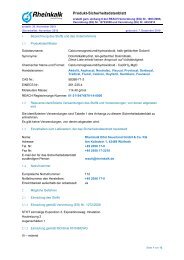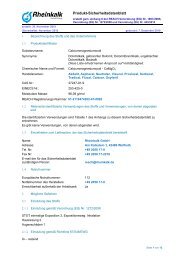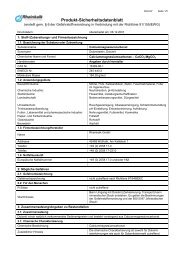SO - Rheinkalk
SO - Rheinkalk
SO - Rheinkalk
Create successful ePaper yourself
Turn your PDF publications into a flip-book with our unique Google optimized e-Paper software.
Thermal waste treatment plants<br />
At the beginning of the 1990s retrofitting or construction of flue-gas cleaning plants<br />
was initiated for municipal waste and hazardous waste incineration plants (MWI /<br />
HWI). The driving force for this was the 17th BImSchV in Germany which was nearly<br />
completely transferred to European legislation, which moreover also affected other<br />
industrial fields.<br />
Important objectives in this respect include high efficiencies in the removal of HCl<br />
and <strong>SO</strong>2 in addition to the already much-discussed ecotoxic pollutants. In order to<br />
meet the mandatory objectives, very complicated wet processes were installed in the<br />
first phase while some operators used retrofitting or upgrading existing semi-dry or<br />
dry processes. The installation of the MCD process proved to be a successful<br />
measure for the cost-effective compliance with the 17th BImSchV. The various<br />
methods include combinations of spray sorption and dry sorption as well as a<br />
combination of two dry sorption steps. Of considerable importance for this is the use<br />
of a highly reactive Spongiacal ® product in the dry sorption stage. The application of<br />
mixed adsorbents is widely used to reduce ecotoxic pollutants.<br />
<strong>SO</strong>2-separation [%]<br />
100<br />
80<br />
60<br />
40<br />
20<br />
0<br />
Schematic description of the MKT-process<br />
one stage spray<br />
dry sorption<br />
Stoichiometric ratio<br />
savings ~ 30 - 50 %<br />
0,0 1,0 2,0 3,0 4,0<br />
Stoichiometric ratio [-]<br />
Graph 5: Description of the MCD process (Two-Stage-Process)<br />
The operating temperatures of the dry sorption stages have recently been used to<br />
optimise operational processes. The temperatures in the fabric filter stage usually lie<br />
between 150 °C and 190 °C. Current investigations have also been carried out at<br />
220 °C.<br />
5


